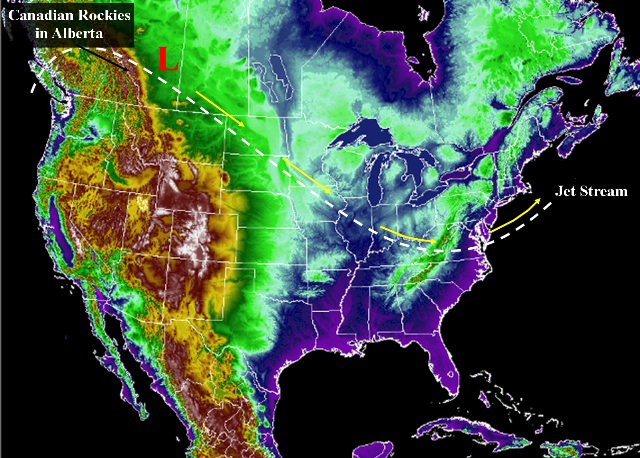The United States is blessed with a wonderful northern neighbor . . . except when Canada is in a generous mood and shares its winter weather. That’s when the U.S. gets clipped or mauled by screamingly cold weather. We call it a “Polar Vortex”, but the cold fronts have traditionally been called Alberta Clippers, Saskatchewan Screamers. Manitoba Maulers, or even Ontario Scary-o, depending on which Canadian province the storm started. No matter where they come from, they are fast, mean and bitterly cold.
Beware the fast and stormy Alberta Clipper!
All three storms form when hot wet air from the Pacific hits Central Canada. In an El Niño year like this, Pacific winds off of the Northwest states and Western Provinces are warmer than ever. They blow inland, over the Rockies and crash into cold Arctic air sinking into the frozen Prairies. If this miserable cold hits a jetstream, look out. The fast and strong winds will whip that cold through the US and we won’t be happy about it. If it hits the cold alongside the Rocky Mountains, it’s a relatively dry Alberta Clipper. If it goes farther inland, it may come out of Saskatchewan, Manitoba or even the Great Lakes province of Ontario.

A cold Canadian storm clipping from Alberta to Virginia, freezing Chicago, Washington DC and New York City. Source: National Weather Service
Of course, that’s not the end of the ride for the scary-o, screaming, clipping mauler of a storm. The jetstream usually carries it all the way to the East Coast, where it can bomb—literally. This is the weather phrase for hitting warm, wet Atlantic Ocean air and exploding into an icy, blizzardy, wet mess. We saw this in January with Winter Storm Jonas and this past Valentine’s Day with Winter Storm Olympia. The hot Atlantic air holds a lot of moisture which precipitates out when hit by cold temperatures. Alberta clippers and their Canadian cousins hit the wet air like a train wreck. As a result, we saw snow in the Northeast, heavy rain in the Southwest and icy misery in the Mid-Atlantic states.

The Clipper “bombs” on the East Coast—and it is a very wet explosion. Source: NOAA
So thank you, Canada, for the interesting weather. Could you please go back to just sending us maple syrup and good comedians?
